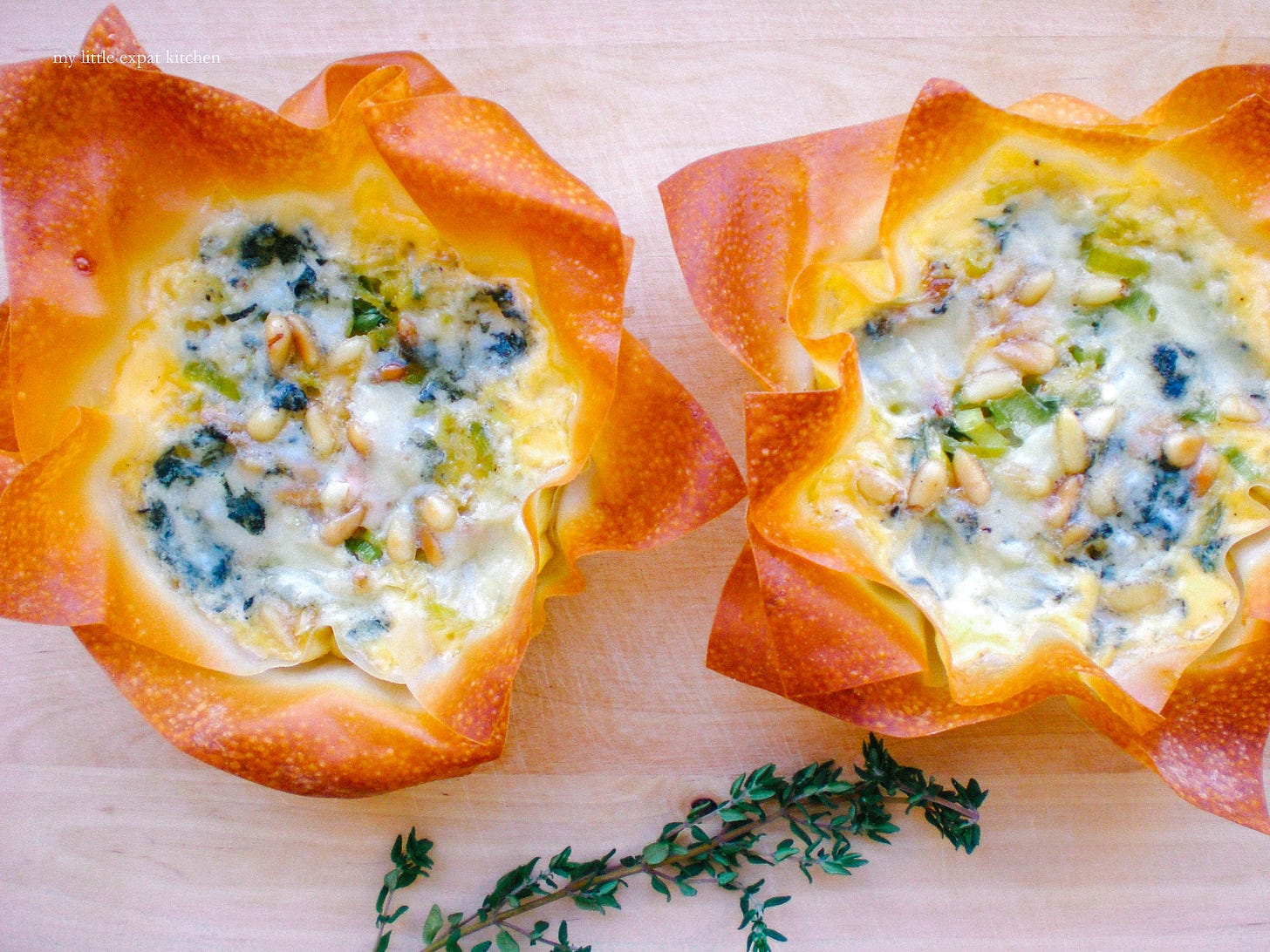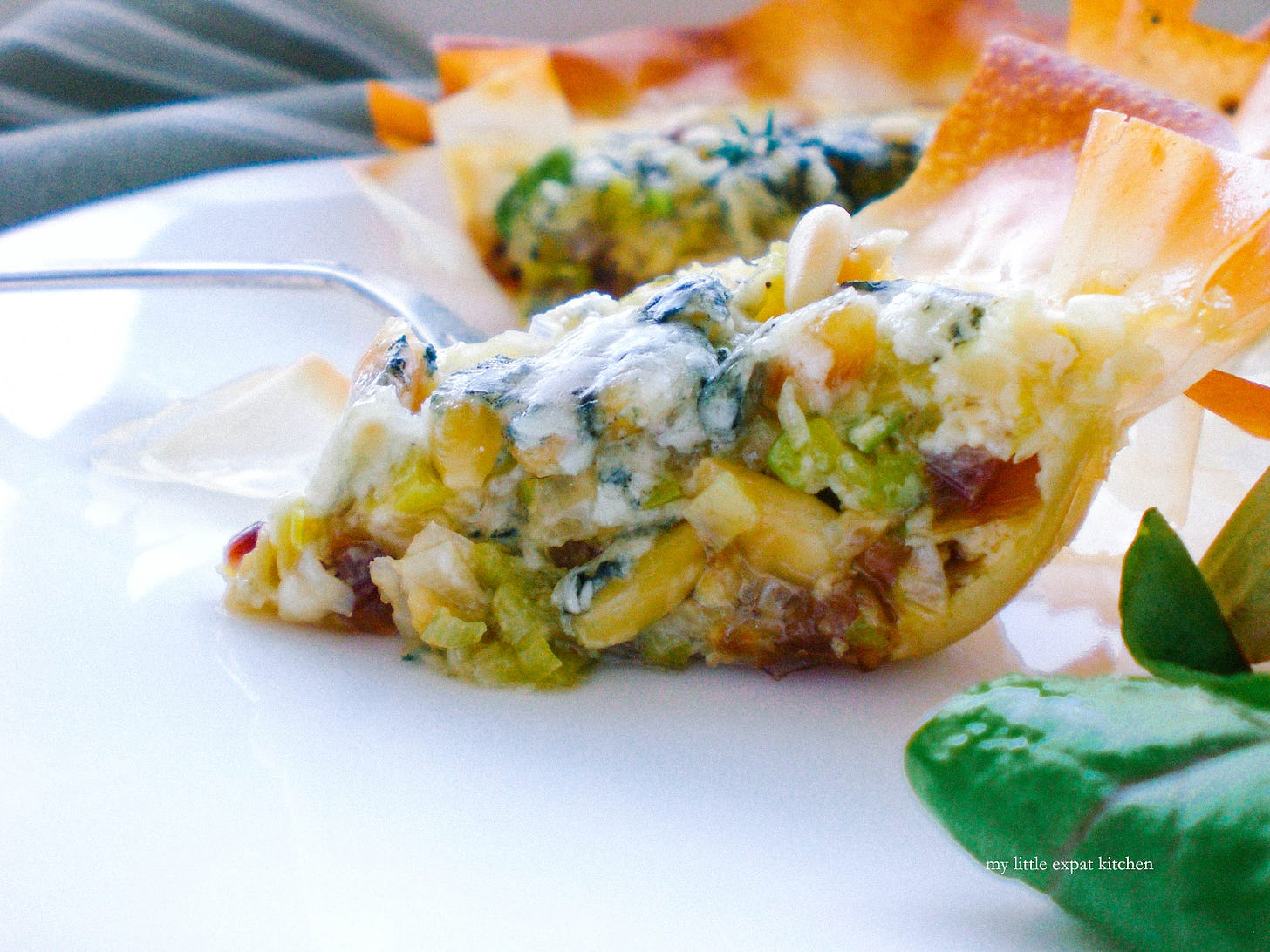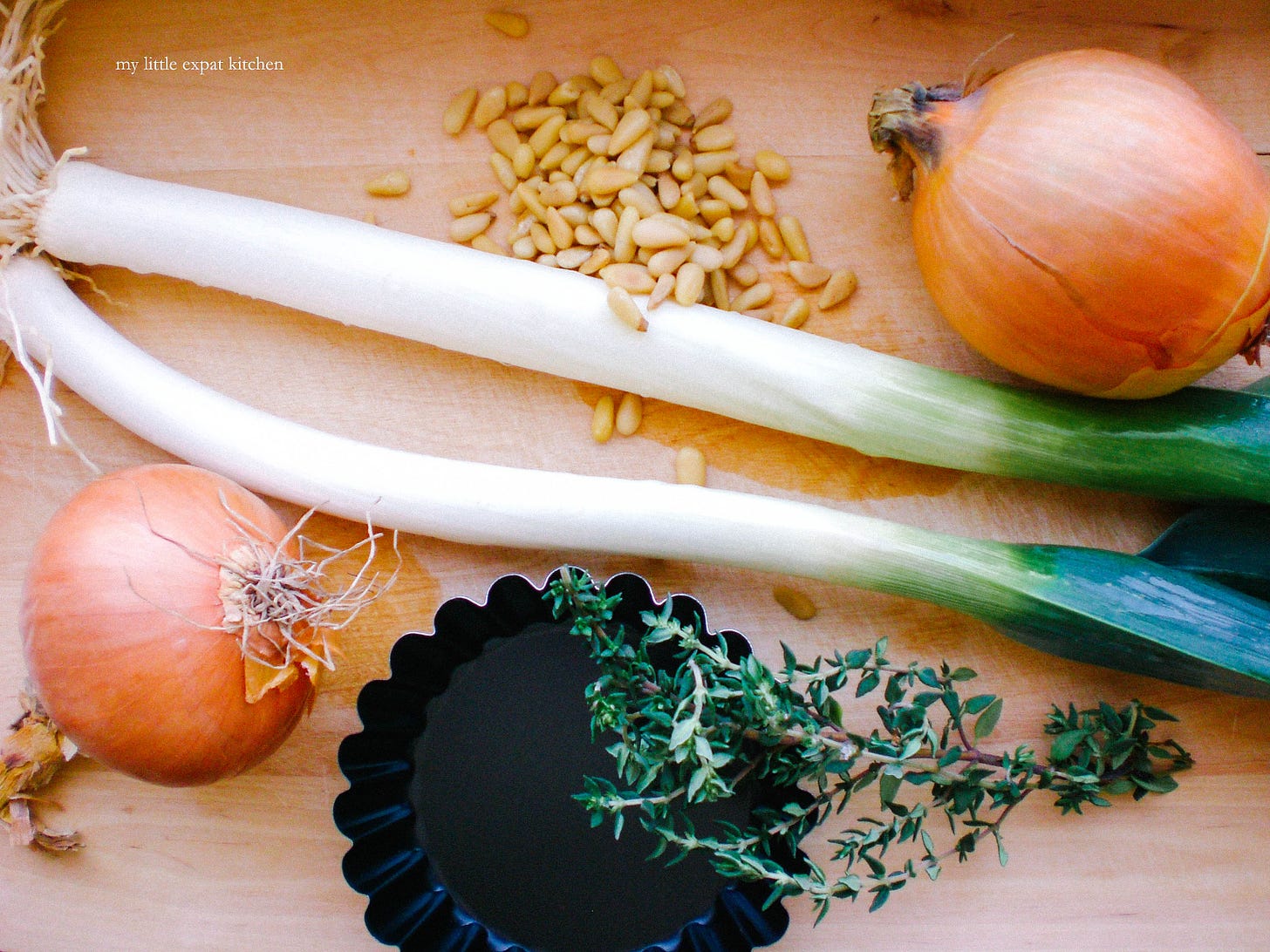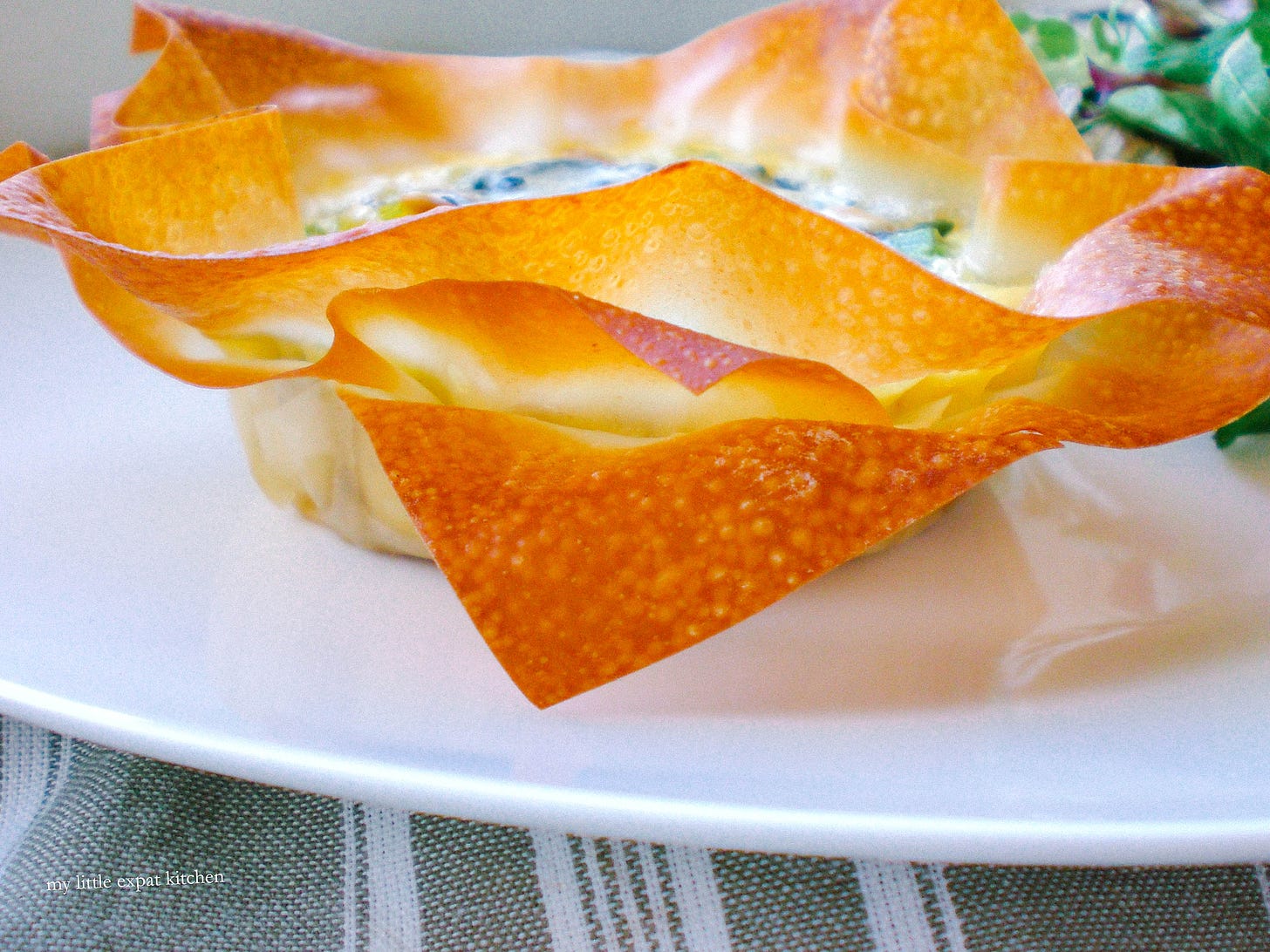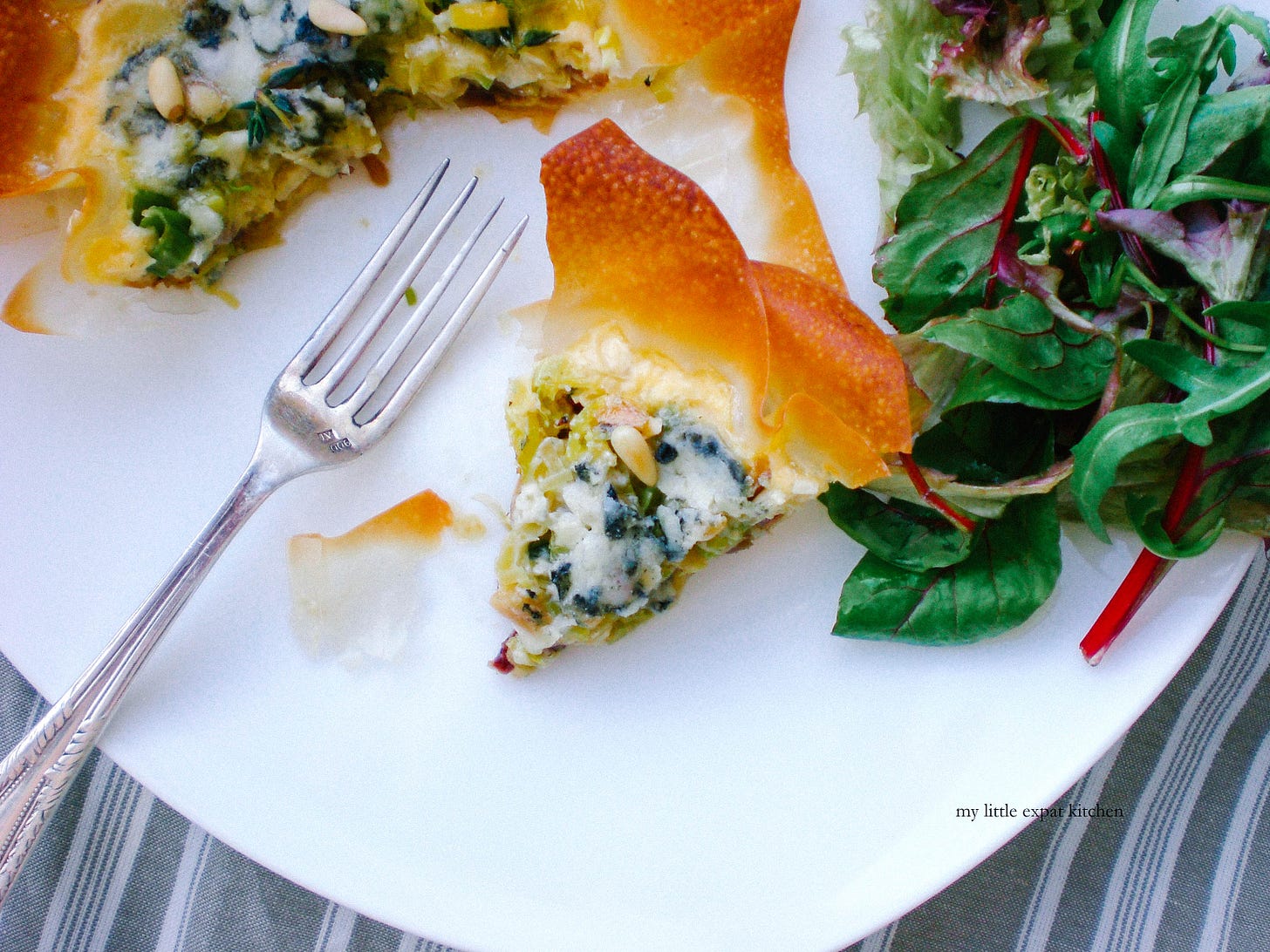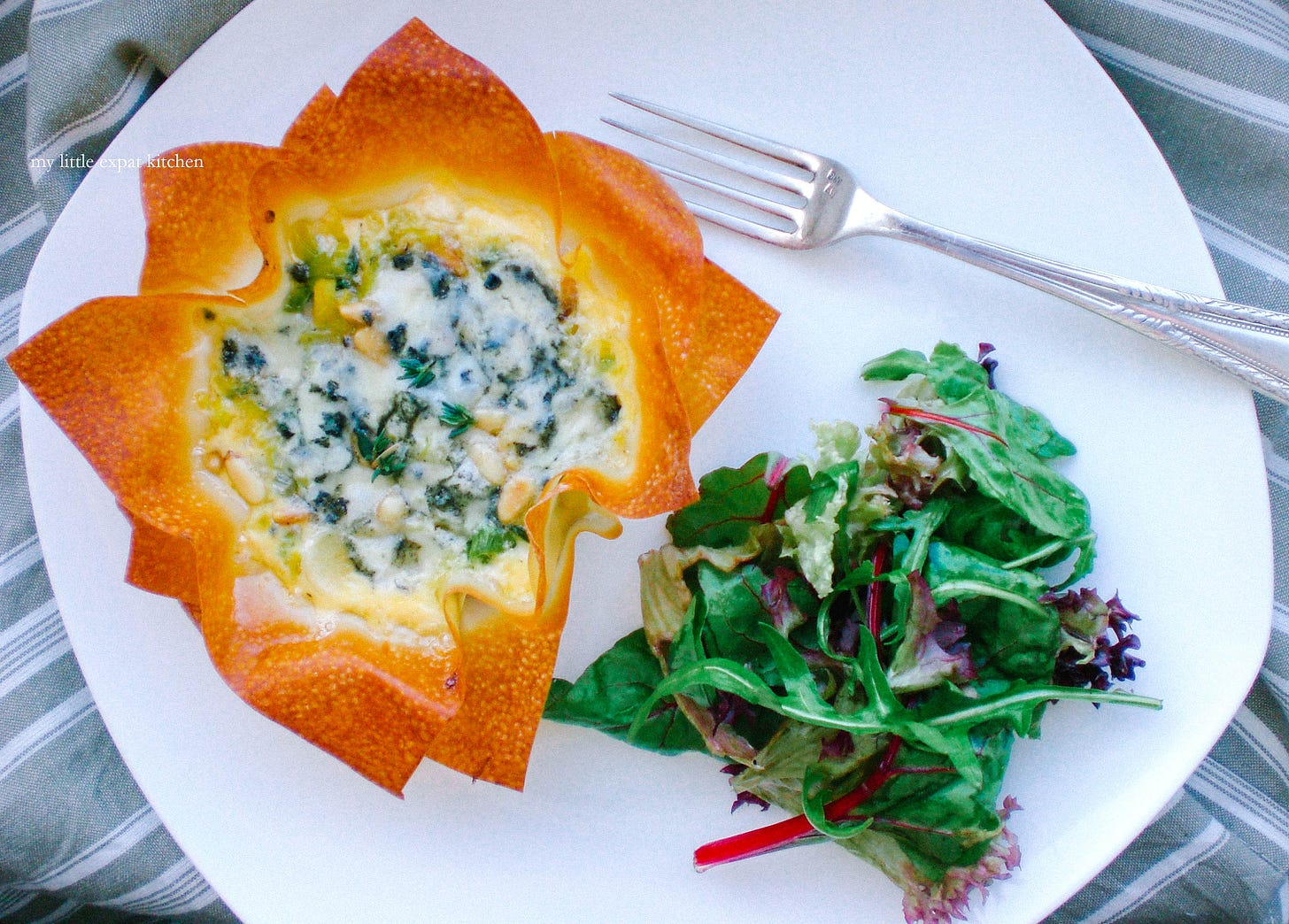Phyllo tartlets with homemade caramelized onions, leeks and Roquefort cheese
With pine nuts and thyme
Published originally on my blog on 18 March 2010
Each year, Michelin stars are awarded to the greatest restaurants in the world based on the quality of ingredients, skills in their preparation, combination of flavors, levels of creativity, value for money and consistency of culinary standards. The Michelin Guide which awards these stars is a hotel and restaurant guide created by the Michelin brothers. Yes, of the Michelin tire company!
It's so funny how a tire company is connected to high-end food, right? Well, in France in 1900 these two brothers being incredibly business-savvy, decided to publish a guide for car owners- which were no more than 3,000 at that time in France- listing gas stations where they could find petrol, places where they could change or buy those all-important tires and a list of decent eateries where they could have a good meal. Nowadays, this guide is a revered little book for foodies all over the world in which they can find the best restaurants to dine in. For chefs on the other hand, seeing a star next to their restaurant in this guide is one of the highest accolades they can ever receive.
The guide can award up to 3 stars to a certain establishment and chefs go absolutely crazy over them, especially European chefs. Getting a star means putting their restaurant on the culinary map, more money, status, but sometimes losing a star can have devastating effects, the closing of one's restaurant being the least of them. I was watching a documentary about the Michelin stars and I was shocked to hear that in 2003 one of the most famous and accomplished 3-starred chefs in France, Bernard Loiseau, fearing that he was going to lose one of his stars, ended up taking his own life.
I've never eaten at a Michelin starred restaurant (I have!) so I can't tell you what a Michelin starred dish tastes like, but sometimes I wonder if there should be a Michelin star for home cooks. Given to us by our loved ones, the ones we cook for and share our passion for food with. Perhaps they would be more lenient than an anonymous Michelin star inspector who gets paid to eat but hey, I don't mind. When my boyfriend tasted this tartlet he said it was worthy of a Michelin star and I believed him.
Oh, this glorious tartlet. Isn't it a sight for sore eyes? Wait till you get a taste of it! I have one word for you, well actually two words: caramelized onions. I don't know about you, but I'm craaaazy about onions. I have a special place in my heart for them. Caramelized onions for me might even be the best part of a meal.
You take a simple yellow onion, you slice it, you put it in a pan with a little olive oil and you just let it slowly and gently fry. You can see its progress, from white it becomes pale and translucent, then yellow and then it starts taking on a golden color and the aromas start filling your kitchen and after a while the caramelization is in full swing. Golden brown onion sizzling in the pan, you scraping away bits of it and finally the time comes. You get to taste it. What a flavor, what a sweet flavor. Adding it in these phyllo tartlets surely elevates the quality and savor of those beautiful flower-like edible creations, but try topping a juicy steak with it or adding it on top of toasted slices of baguette. The taste will blow you away.
Back to the tartlet though where besides the onions, I give you sweet leeks, woody pine nuts, earthy thyme, tangy blue cheese and Roquefort in particular, a luscious cream-egg mixture and phyllo. Phyllo (or filo) pastry, the traditional Greek, crispy, thin pastry that is to die for! Combine everything and you get a tartlet made in heaven. One bite and your taste buds will awaken with these divine, elegant flavors. Don't be scared of the Roquefort, I assure you it does not overpower the other flavors, it rather complements them. The egg-cream mixture is light and the baked phyllo is just perfect, crunchy and buttery. Accompany this delicious tartlet with a leafy salad and a chilled bottle of white wine and you're set. It's wonderful for lunch and you can also serve it as a first course for a fancy dinner.
Phyllo Tartlets with Caramelized Onions, Leeks and Roquefort Cheese
I used low-fat cream for these tartlets but you can use full-fat. You can also substitute the olive oil for the frying of the leeks with butter and even though Roquefort cheese was my cheese of choice, feel free to use any other blue cheese you prefer, like Stilton or Fourme D'Ambert.
I used both loosed-bottomed and regular tartlet tins although it is a bit easier to get the tartlets out of the loose-bottomed ones.





